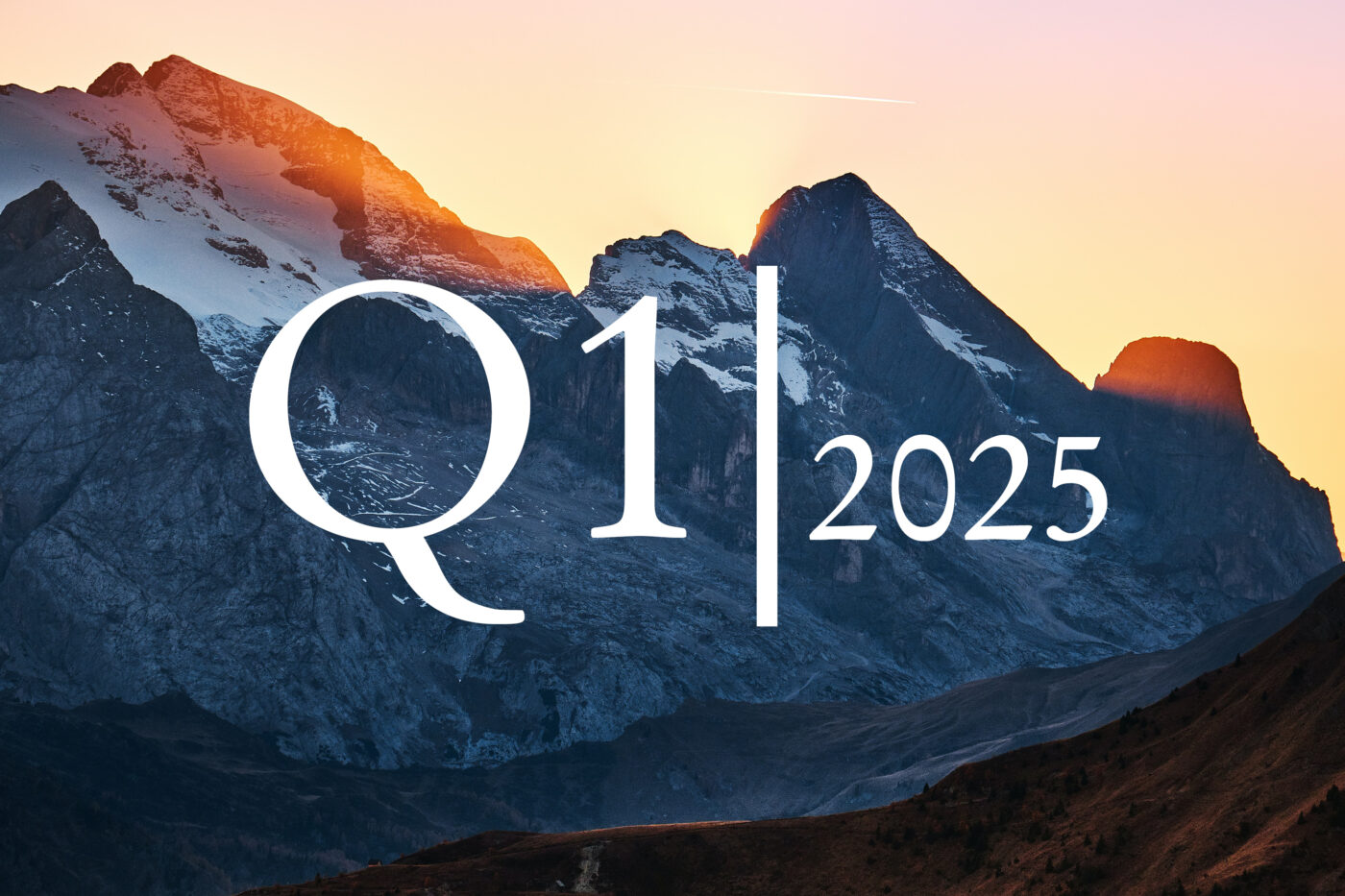In a nutshell
Renewed growth concerns have caused interest rate cut expectations to rise and bond yields to fall, while equities and bonds are developing less in sync.
Falling interest rates, a weaker US dollar and broader earnings growth argue in favour of more market breadth – and there are early signs of this.
In our opinion, the level of optimism on equity markets does not match the expectations of the bond and commodity markets. The US elections are causing uncertainty and seasonality remains negative for equities for the time being. We remain balanced for the time being and see more opportunities after the US elections.
Portfolio positioning at a glance
Little potential for equities and more volatility over the summer was our expectation three months ago – an environment for anti-cyclical trading, as we argued. After the markets initially continued to rise in July, we reduced our equity allocation accordingly. We then used the rapid and significant setback at the start of August to increase the equity allocation back towards neutral. We currently feel well positioned with a balanced positioning. Bonds appear less attractive after the interest rate rally of recent months, and an overweighting is not necessary here, nor is a long duration. We favour medium maturities, high-quality corporate bonds and local currency bonds from emerging markets. In contrast, we have become more cautious with high-yield bonds and have positioned ourselves somewhat more defensively than before in view of weaker economic data. Valuation of US equities is still high, but the uncertainty surrounding the US elections argues against a strong underweight. European equities are more attractive, but the economy is not really gaining momentum. Gold, which has performed well, remains significantly overweight. Other commodities, especially industrial metals, remain a sensible addition to the portfolio.Berenberg Asset Allocation

Third-quarter review: return of growth concerns
For more than a year, the markets have been wrestling with the question of whether the US economy will make a soft landing. In the first half of the year, the risks of excessive growth and high inflation took centre stage. Hopes of interest rate cuts were priced out and bond yields rose. With disappointing economic data and falling inflation, the risk of a stronger economic slowdown came to the fore in the third quarter. Markets again priced in further interest rate cuts. The US dollar depreciated. Bond yields fell. Bonds, gold and defensive equity sectors performed positively. Equity markets corrected by around 10% compared to the highs reached in mid-July, but then recovered quickly and ultimately remained virtually unchanged, with European equities performing better. Gold leads the performance rankings in the third quarter and since the beginning of the year. As the focus shifted from inflation to growth concerns, equities and bonds ran less in parallel.
Fed rate cut expectations rise with growth concerns
Recession fears rose sharply in the US with weak labour market data; bond yields fell and rate cut hopes rose
Interest rate reduction cycle has begun across the board
The normalisation of central bank interest rates has begun. The ECB cut its key interest rate for the first time in June, the BoE in August and the Fed in September. Further steps are likely to follow – the ECB already took the second step in September. Growth in the eurozone is anaemic and is likely to weaken further in the US in the coming months. However, the chances of a soft landing there are increasing. This is because the easing of financial conditions (interest rate cuts, weaker US dollar, looser lending standards, lower oil price) could give the US economy a tailwind again after a certain delay. After months dominated by disappointing US economic data, US economic surprises could then turn positive in the fourth quarter, especially if the end of uncertainty about the outcome of the US elections leads to postponed investment or consumer decisions being made. Equity markets seem to be betting on this scenario, with all-time highs and a consensus expectation of 15% for earnings growth in 2025 for the S&P 500. The bond markets, however, seem to see a different scenario, as the further eight Fed rate cuts to 2.75% by the end of 2025 that have been priced in would probably require a more significant economic downturn – the pace and extent of the rate cuts that have been priced in have never been seen historically without a recession. In the soft landing scenario, our economists expect the Fed to cut interest rates only four more times to 3.75-4.0% by mid-2025, in which case the current yields on 10-year US government bonds of 3.7% (nominal) and 1.6% (real) appear too low. So if equity markets are right, too much hope of an interest rate cut is probably priced in. If the bond markets are right, equities harbour more risks than opportunities. The truth could lie in the middle. In this case, equities offer some potential and the current interest rate on bonds helps to avoid losses – both asset classes can then be expected to generate moderately positive returns over the next 12 to 18 months. This would be a good environment for high-quality corporate bonds. An extension of the duration position beyond neutral does not appear appropriate in view of the prevailing interest rate optimism.
In the third quarter, growth fears supported government bonds, gold and defensive sectors; equities moved sideways in a volatile manner
More market breadth – but not the time for bold positions
The inconsistency of the markets and the current highly ‘data-dependent’ actions of the central banks do not provide an environment for courageous investor positioning, especially as the geopolitical risks remain high and the race for the US presidency is very close. The broader the market becomes, the less need there is for highly focused positions. Recently, it was no longer just a few large technology stocks that determined the stock market trend. In the European sectors, defensive sectors led the way in the third quarter. Small caps also performed slightly better than large caps, supported by falling interest rates and corporate profits, which grew more strongly across the board in the second quarter. If the US interest rate cuts are accompanied by a weaker US dollar, which is becoming apparent but could still be influenced by the US election result, this should also support the performance of investments in other regions, particularly in emerging markets. Investor funds, which have primarily flowed into the US in recent years, could once again be channelled more strongly into other regions – the rapid appreciation of the yen at the beginning of August could have been a foretaste of this. The market trend should then also gain breadth globally. However, the opportunities that arise will depend heavily on the outcome of the US election.
More market breadth: small caps have recently outperformed
With the turnaround in interest rates and broader earnings growth, the rela-tive performance of small caps versus large caps could finally be bottoming out
If the strength of US dollar runs out, this will favour other regions
For more than ten years, US dollar has only known one direction – upwards. At the same time, Western stock markets, especially US equities, have benefited
More opportunities after the US election
The race for the US presidency is likely to cause more volatility in October, especially as October is historically the month with the highest volatility anyway. We do not expect the stock markets to break out to new highs before the US election – but rather to move sideways in a volatile manner. With the end of the election uncertainty and supported by further interest rate cuts, equities are likely to perform better again in the new year, in line with the typical positive seasonality. This is particularly true if the markets are able to put growth concerns behind them with more positive US economic data and interest rates are lowered further – this would then be the Goldilocks environment of a soft landing. Which regions will then benefit in particular depends in part on the outcome of the US election. In the medium term, however, all asset classes are likely to benefit from investors shifting more capital out of short-term interest rate investments as rates fall. In recent cycles, this has been observed 6-12 months after the first interest rate cuts. We assume that medium-term bonds, as well as equities with attractive valuations such as European equities, especially small and mid-caps, and emerging market equities, are likely to benefit from this.
Author

Prof. Dr. Bernd Meyer
Prof. Dr. Bernd Meyer has been Chief Investment Strategist at Berenberg Wealth and Asset Management since October 2017, where he is responsible for discretionary multi-asset strategies and wealth management mandates. Prof. Dr. Meyer was initially Head of European Equity Strategy at Deutsche Bank in Frankfurt and London and, from 2010, Head of Global Cross Asset Strategy Research at Commerzbank. In this role Prof. Dr. Meyer has received several awards. In the renowned Extel Survey from 2013 to 2017, he and his team ranked among the top three multi-asset research teams worldwide. Prof. Dr. Meyer is DVFA Investment Analyst, Chartered Financial Analyst (CFA) and guest lecturer for "Empirical Research in Finance" at the University of Trier. He has published numerous articles and two books and received three scientific awards.


